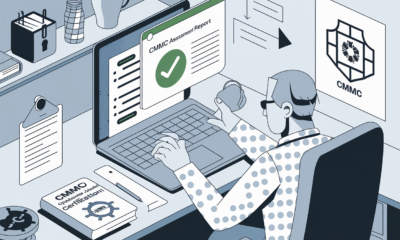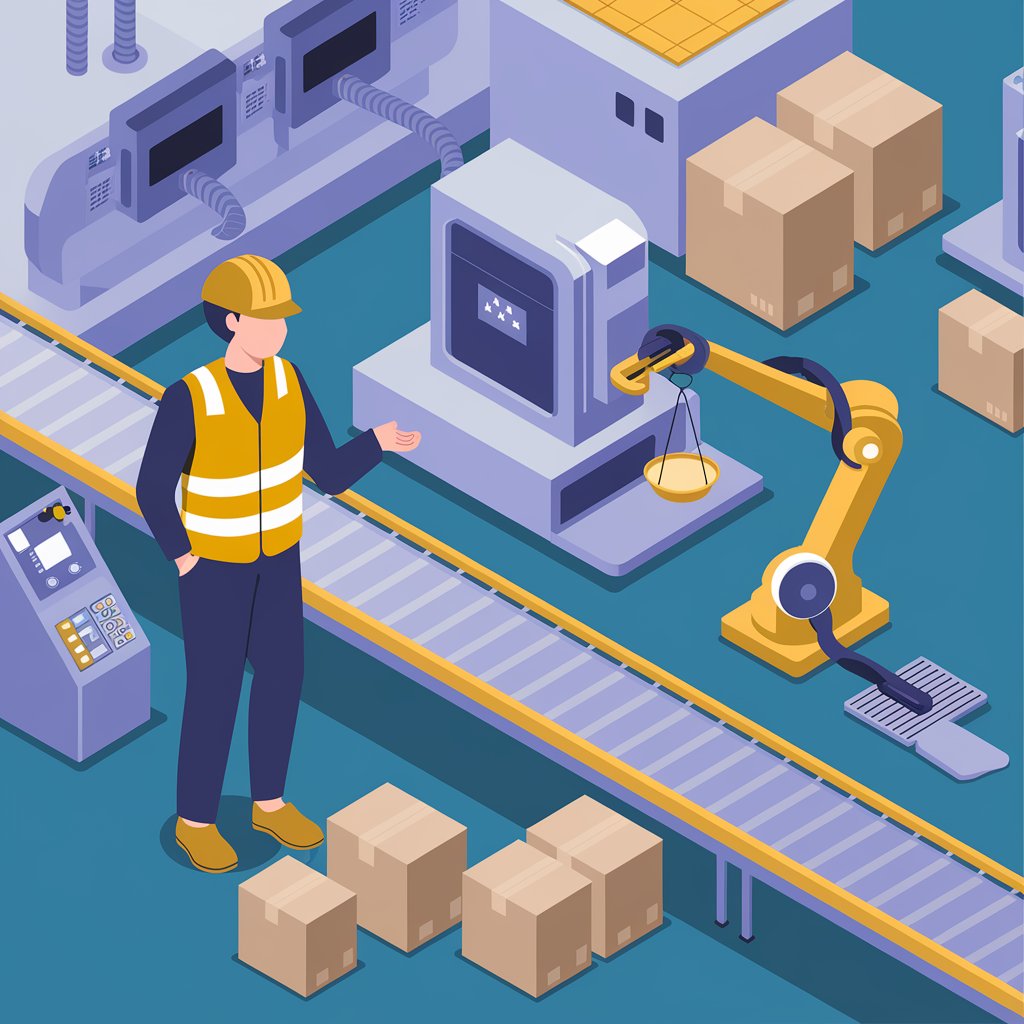Business
Choosing the Right Steel Plate Fabricators for Your Project
Published
4 months agoon

Steel plate fabrication is a crucial service in a variety of industries, from construction and manufacturing to energy and transportation. Steel plate fabricators are responsible for transforming raw steel into custom components, structures, and products that meet the specific needs of a project. Whether it’s cutting, welding, or bending steel plates into precise shapes, the skills and capabilities of fabricators are vital for the success of industrial and commercial projects.
This article will explore the role of steel plate fabricators, the processes they use, their importance in different industries, and how to choose the right fabricator for your next project.
The Role of Steel Plate Fabricators
Steel plate fabricators specialize in shaping, cutting, and assembling steel plates into various forms and structures. Their work involves using advanced tools and machinery to ensure that steel components are created to precise specifications. These components may be used in a wide range of applications, including bridges, industrial machinery, pressure vessels, and building frameworks.
Fabricators must have in-depth knowledge of metalworking techniques, material properties, and safety standards to deliver high-quality results that can withstand demanding conditions.
Key Processes in Steel Plate Fabrication
Steel plate fabrication involves several essential processes that allow fabricators to create customized solutions for their clients:
1. Cutting
Cutting is the first step in the fabrication process. Fabricators use techniques like laser cutting, plasma cutting, waterjet cutting, and flame cutting to precisely cut steel plates to the required dimensions. The choice of cutting method depends on the thickness of the steel and the desired level of precision.
2. Bending and Forming
Once the steel plates are cut, fabricators use various methods to bend and form the steel into the desired shape. This could involve press braking, rolling, or stamping, depending on the complexity of the design. Bending and forming are critical for creating curved structures or custom geometries.
3. Welding
Welding is a core process in steel plate fabrication. Fabricators use different welding techniques—such as MIG, TIG, and arc welding—to join steel plates together. High-quality welding ensures the structural integrity of the final product, making it durable enough to withstand high stresses and environmental challenges.
4. Machining
Machining involves the precision shaping of steel components using tools like drills, mills, and lathes. This process is necessary for creating holes, threads, and other intricate details that are required for specific industrial applications.
5. Finishing
The final step in steel plate fabrication is finishing. This can include polishing, painting, powder coating, and galvanizing to enhance the appearance and protect the steel from corrosion, wear, and environmental damage.
Applications of Steel Plate Fabricators
Steel plate fabricators serve a wide range of industries, providing custom steel components for various applications:
1. Construction
In construction, steel plate fabricators produce structural steel elements such as beams, columns, and frameworks that are essential for buildings, bridges, and infrastructure projects.
2. Manufacturing
Fabricators supply the manufacturing sector with machinery components, equipment, and assembly line parts that require strength and durability for long-term use in industrial processes.
3. Energy and Power
The energy sector relies on steel plate fabricators to create components like pressure vessels, boilers, pipelines, and wind turbine parts that must withstand high pressure, heat, and environmental factors.
4. Transportation
In transportation, steel plate fabricators are responsible for building parts used in ships, railways, trucks, and other vehicles that require both strength and lightness to ensure safe and efficient operation.
5. Aerospace and Defense
Steel plate fabrication is also critical for the aerospace and defense industries, where custom steel components are used in aircraft, military vehicles, and defense infrastructure.
Benefits of Working with Steel Plate Fabricators
Partnering with skilled steel plate fabricators offers several key advantages:
- Customization: Steel plate fabricators offer tailored solutions that meet specific design and performance requirements, allowing for flexibility in material choice, size, and complexity.
- Precision: Advanced fabrication techniques ensure that steel components are made with exacting precision, which is essential for safety and reliability in industrial applications.
- Durability: Fabricated steel products are built to last, offering long-term strength, durability, and resistance to harsh environments.
- Cost Efficiency: Steel fabrication allows for cost-effective production, minimizing waste and reducing the overall expense of large-scale projects.
- Versatility: Steel plate fabricators work with various grades and types of steel, ensuring that components can be fabricated to meet diverse needs across different industries.
How to Choose the Right Steel Plate Fabricator
Selecting the right steel plate fabricator is crucial to the success of your project. Here are some factors to consider when choosing a provider:
- Experience: Look for fabricators with a strong track record in your industry and extensive experience in handling similar projects.
- Capabilities: Ensure that the fabricator has the necessary equipment, skills, and technology to meet the specific requirements of your project, including size, complexity, and materials.
- Quality Control: Choose a fabricator that adheres to strict quality control processes to ensure that your components are fabricated to the highest standards.
- Customization: Make sure the fabricator offers custom fabrication services and can work with you to design and create components that meet your exact specifications.
- Reputation: Research the fabricator’s reputation by reading reviews, case studies, and testimonials from previous clients. A strong reputation is a good indicator of reliability and quality.
- On-Time Delivery: Timely delivery is essential in many industries. Choose a fabricator with a proven track record of delivering projects on schedule.
Steel plate fabricators are a vital resource for industries that require custom steel components built to precise specifications. From construction and manufacturing to energy and transportation, fabricators offer the expertise and equipment necessary to deliver strong, reliable, and cost-effective steel solutions. By selecting an experienced and capable steel plate fabricator, you can ensure that your project is completed to the highest standards of quality and performance.
You may like
-


Adding Walls During Home Remodeling: Tips and Material Choices
-


Why Your First CMMC Assessment Matters More Than You Think
-


Understanding Business Loans: A Complete Guide for Entrepreneurs
-


All You Need to Know About Long-Distance Move
-


Why Your Business Needs a Packaging Systems Integrator
-


The Ultimate Guide to Tax Preparation and Planning for Businesses
Business
Understanding Business Loans: A Complete Guide for Entrepreneurs
Published
3 months agoon
September 18, 2024
Starting or growing a business often requires capital to fund various aspects, from operations and inventory to expansion and marketing. Business loans can provide the necessary financial support to achieve these goals.
However, understanding the different types of business loans available and how to apply for them can be overwhelming. In this comprehensive guide, we will explore the essentials of business loans, including their types, benefits, application processes, and key considerations to help you make informed decisions for your business.
Types of Business Loans
Business loans come in various forms, each designed to meet specific needs and situations. Here are some of the most common types:
- Term Loans: These are traditional loans where you borrow a lump sum of money and repay it over a fixed period with interest. Term loans can be short-term (less than one year) or long-term (more than one year), and they are typically used for major investments or large expenses.
- Line of Credit: A business line of credit provides access to a revolving credit limit that you can draw from as needed. You only pay interest on the amount you borrow, making it a flexible option for managing cash flow or covering short-term expenses.
- Equipment Financing: This type of loan is specifically for purchasing or leasing equipment. The equipment itself serves as collateral, which can make it easier to obtain financing for high-cost assets like machinery or technology.
- Invoice Financing: Invoice financing allows businesses to borrow money against outstanding invoices. This can help improve cash flow by providing immediate funds while waiting for customers to pay their invoices.
- SBA Loans: Loans backed by the Small Business Administration (SBA) offer favorable terms and lower interest rates. These loans are designed to support small businesses and are often used for a variety of purposes, including working capital and equipment purchases.
- Merchant Cash Advances: This type of financing provides a lump sum of money in exchange for a portion of future credit card sales. It’s a quick option for businesses with strong credit card sales but can be more expensive due to higher fees and interest rates.
Benefits of Business Loans
Securing a business loan can offer numerous advantages for your company. Here are some key benefits:
- Access to Capital: Business loans provide the necessary funding to invest in growth opportunities, cover operational costs, or manage unexpected expenses. This access to capital can be crucial for maintaining and expanding your business.
- Flexibility: Depending on the type of loan, you may have flexibility in how you use the funds. For instance, a line of credit allows you to withdraw funds as needed, while term loans provide a lump sum for specific projects.
- Improved Cash Flow: Loans can help smooth out cash flow by providing funds to cover periods of low revenue or delayed payments. This ensures that you can continue operating and meet financial obligations without interruption.
- Build Credit History: Successfully managing and repaying a business loan can help build your business credit history. This can improve your creditworthiness and increase your chances of securing additional financing in the future.
- Growth and Expansion: Loans can provide the capital needed to invest in new projects, open additional locations, or expand product lines. This can help you achieve long-term growth and business development goals.
How to Apply for a Business Loan
The application process for a business loan involves several key steps. Here’s a general overview:
- Assess Your Needs: Determine how much funding you need and how you plan to use it. This will help you choose the right type of loan and prepare a solid application.
- Check Your Credit Score: Your business credit score and personal credit score (if you’re a sole proprietor or small business owner) will play a significant role in the loan approval process. Review your credit reports and address any issues before applying.
- Prepare Documentation: Gather the necessary documents for your application, including financial statements, tax returns, business plans, and legal documents. Lenders will use this information to assess your creditworthiness and the viability of your business.
- Research Lenders: Explore different lenders and loan options to find the best fit for your needs. Consider factors such as interest rates, repayment terms, and fees. This could include traditional banks, credit unions, online lenders, and alternative financing options.
- Submit Your Application: Complete and submit your loan application along with the required documentation. Be prepared to answer additional questions or provide further information if requested by the lender.
- Review and Accept Terms: If approved, carefully review the loan terms and conditions before accepting. Ensure that you understand the repayment schedule, interest rates, and any associated fees.
Important Considerations
Before taking out a business loan, consider the following factors:
- Interest Rates: Compare interest rates among different lenders to ensure you’re getting the best deal. Lower rates can save you money over the life of the loan.
- Repayment Terms: Understand the repayment terms, including the length of the loan and the frequency of payments. Make sure the terms align with your business’s cash flow and financial projections.
- Fees and Costs: Be aware of any additional fees or costs associated with the loan, such as origination fees, prepayment penalties, or late fees. Factor these into your decision-making process.
- Impact on Business: Evaluate how the loan will impact your business’s financial health. Ensure that taking on debt will not strain your cash flow or hinder your ability to manage other financial obligations.
- Alternatives: Consider alternative financing options, such as equity financing or grants, if a business loan is not the best fit for your needs. Exploring all options can help you make the most informed decision.
Conclusion
Business loans can be a valuable tool for entrepreneurs looking to fund growth, manage cash flow, or invest in new opportunities. By understanding the different types of loans available, the benefits they offer, and the application process, you can make informed decisions that support the success and development of your business. Carefully consider your needs, research your options, and choose a loan that aligns with your financial goals. With the right approach, a business loan can provide the capital needed to achieve your business objectives and drive long-term success.

Moving long distances is both exciting and challenging. Whether you’re relocating for a job, family, or just a fresh start, proper planning is crucial to ensure everything goes smoothly. One of the biggest concerns is how long the move will take, along with preparing your family and pets for the journey. For those moving to or from Tampa, it’s also important to find a reliable moving company to handle the job professionally.
How Long Does a Long-Distance Move Take?
The duration of a long-distance move can vary based on several factors. On average, it can take anywhere from a few days to few weeks. Let’s explore the key factors that influence this timeline.
1. Distance Between Locations
- The farther you’re moving, the more time it will take. For example, a move from Tampa to a nearby state might take a few days, but a cross-country move can extend to two weeks.
- Moving companies need to factor in driving time, stops, and the complexity of delivering to different states.
2. The Size and Complexity of the Move
- The size of your move plays a big role in determining how long it will take. Larger households with more belongings, including fragile or bulky items, often require more time for packing, loading, and unloading.
- Moves that involve specialty items, such as pianos or large furniture, can extend the process.
3. Weather and Road Conditions
- Weather is a critical factor that can either speed up or delay your move. For instance, if you’re moving during Tampa’s hurricane season, your plans might be delayed due to storms or road closures.
- Similarly, moving in winter months, especially to colder regions, can introduce challenges like snow, ice, or poor road conditions.
- If you’re looking for experienced movers in areas like Victoria, it’s smart to check out options like Paramount Moving, which specializes in long-distance and commercial moves.
How to Make a Mind of Your Family for a Long-Distance Move
Moving can be an emotional process for your family, especially children. Making planning for them will make the move easier..
1. Talk About the Move Early
- Start discussing the move with your family as soon as the decision is made. This allows everyone to process the idea and prepare mentally.
- Children, in particular, may need extra time to adjust, so it’s important to explain the reasons behind the move and what they can expect.
2. Create a Family Packing Plan
- Involve your family in the packing process.
- Create a checklist and assign tasks to everyone, from decluttering rooms to packing personal belongings.
- This keeps everyone engaged and helps lessen the stress of the move. Plus, it ensures nothing gets left behind.
3. Maintain Some Routine for Comfort
- During the chaos of packing and moving, maintaining a semblance of routine can help everyone stay grounded.
- Try to stick to normal meal times, bedtimes, and family activities whenever possible. This familiarity will provide comfort, especially for younger children.
How to Get Your Pet Ready for a Long-Distance Move
Pets are sensitive to changes in their environment, and a long-distance move can be stressful for them. Here’s how to keep your pets comfortable during the transition.
1. Visit the Vet Before the Move
- Take your pets to the vet before moving day to ensure they’re healthy for travel.
- Update vaccinations and obtain any medications they might need, especially if your pet suffers from anxiety.
- Your vet can provide useful advice on making the trip more comfortable for them.
2. Pack a Pet Essentials Bag
- Prepare an additional bag only for your pet, just like you would for your family’s necessities.
- Include food, water, toys, and any medications for your pets.
- If you’re traveling by car, bring a portable water bowl and plan regular stops so your pet can stretch and stay hydrated.
3. Make the Journey Stress-Free
- Whether you’re driving or flying, keeping your pet calm is key. When driving, ensure that your pet is comfortable in the car and is safely restrained in a carrier or seatbelt harness.
- For flights, familiarize yourself with airline policies for pets to avoid last-minute complications.
Final Thoughts
Depending on the distance, the weather, and the intricacy of the transfer, a long-distance relocation may take a few days to a few weeks. Your family and pets will feel less stressed and the transfer will go more smoothly if you prepare them well in advance. Your items will arrive promptly and safely if you choose to hire reputable professional movers like https://paramountmoving.ca/victoria/service/commercial-moving-in-victoria/ for your relocation to or from Tampa.
FAQs
What should I do to minimize moving delays?
Plan your move outside peak seasons and avoid holidays when traffic is heavier.
Can I move during Tampa’s hurricane season?
It’s best to avoid moving during hurricane season to prevent delays and possible damage to your belongings.
How can I keep my pets calm during the move?
Maintain their routine, offer familiar toys, and speak to your vet about possible calming treatments.
Business
Why Your Business Needs a Packaging Systems Integrator
Published
3 months agoon
September 13, 2024
A packaging systems integrator is a specialized professional or company that brings together various packaging machines, software, and technologies into a seamless and efficient packaging line. Their role is to design, implement, and optimize integrated systems that enhance productivity and reduce operational costs. For businesses looking to improve their packaging operations, partnering with a packaging systems integrator can be a game-changer.
The Role of a Packaging Systems Integrator
A packaging systems integrator plays several crucial roles, including:
- System Design: Creating a custom solution tailored to the specific needs of the business, considering factors like production volume, product type, and budget.
- Equipment Selection: Identifying the right combination of packaging machines, conveyors, robotic arms, and other components to form an efficient packaging line.
- Software Integration: Ensuring that all machines and systems communicate effectively, often by implementing Manufacturing Execution Systems (MES) or Warehouse Management Systems (WMS).
- Installation and Testing: Overseeing the installation of equipment and software, followed by rigorous testing to ensure everything functions correctly and efficiently.
- Ongoing Support: Providing maintenance, training, and support to ensure the integrated system continues to operate at peak performance.
Benefits of Partnering with a Packaging Systems Integrator
Working with a packaging systems integrator offers numerous benefits, such as:
- Expertise and Experience: Integrators have specialized knowledge and experience, enabling them to design efficient and innovative packaging systems that meet the specific needs of the business.
- Reduced Implementation Time: With their expertise, integrators can streamline the implementation process, minimizing downtime and ensuring a faster transition to the new system.
- Optimized Performance: By designing a custom solution, integrators ensure that the packaging line operates at maximum efficiency, reducing waste and lowering costs.
- Scalability and Flexibility: Integrators create systems that can adapt to changing business needs, allowing for future expansion or modification without significant disruption.
Challenges to Consider When Hiring a Packaging Systems Integrator
While partnering with a packaging systems integrator offers many benefits, there are challenges to be mindful of:
- Initial Costs: Hiring an integrator can involve significant upfront costs, including fees for consulting, equipment, and installation.
- Compatibility Concerns: Ensuring that new equipment and software are compatible with existing systems can be complex and require careful planning.
- Customization Needs: Highly specialized or unique packaging requirements may necessitate additional customization, which can extend project timelines.
To mitigate these challenges, businesses should conduct thorough research, seek referrals, and evaluate multiple integrators before making a decision.
Best Practices for Working with a Packaging Systems Integrator
To maximize the benefits of working with a packaging systems integrator, consider the following best practices:
- Clearly Define Your Goals: Be specific about what you want to achieve, whether it’s reducing costs, increasing throughput, or improving accuracy.
- Communicate Openly: Maintain open lines of communication with your integrator, providing them with detailed information about your current processes and future needs.
- Request a Detailed Proposal: Ask for a comprehensive proposal that outlines the integration plan, timeline, and costs, so you have a clear understanding of what to expect.
- Monitor Progress: Stay involved throughout the process, regularly checking in on progress to ensure that the integration is on track and meeting your expectations.
- Plan for Ongoing Support: Ensure there is a plan for ongoing maintenance, training, and support to keep the system running smoothly over time.
Conclusion
A packaging systems integrator can provide invaluable expertise and support for businesses looking to enhance their packaging operations. By leveraging their specialized knowledge, businesses can achieve a more efficient, scalable, and cost-effective packaging process. If you’re looking to improve your packaging line, consider partnering with a packaging systems integrator to help you reach your operational goals.

Adding Walls During Home Remodeling: Tips and Material Choices

Why Your First CMMC Assessment Matters More Than You Think

Understanding Business Loans: A Complete Guide for Entrepreneurs

yt.be Activate: Activating YouTube with yt.be

Finance and Maneuver in Business

